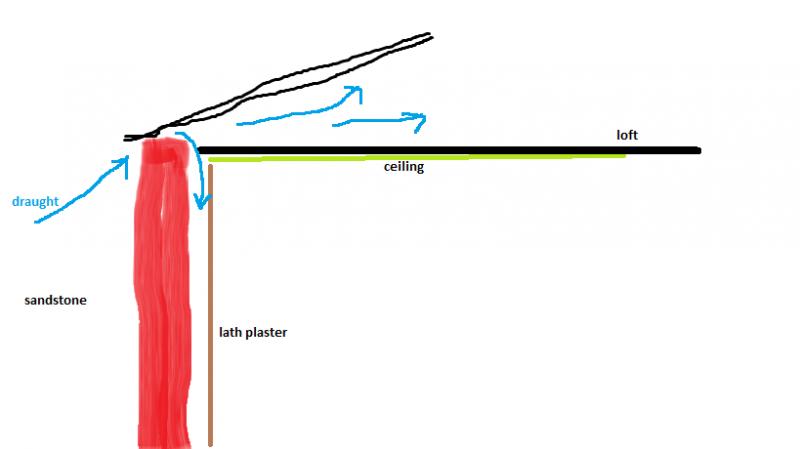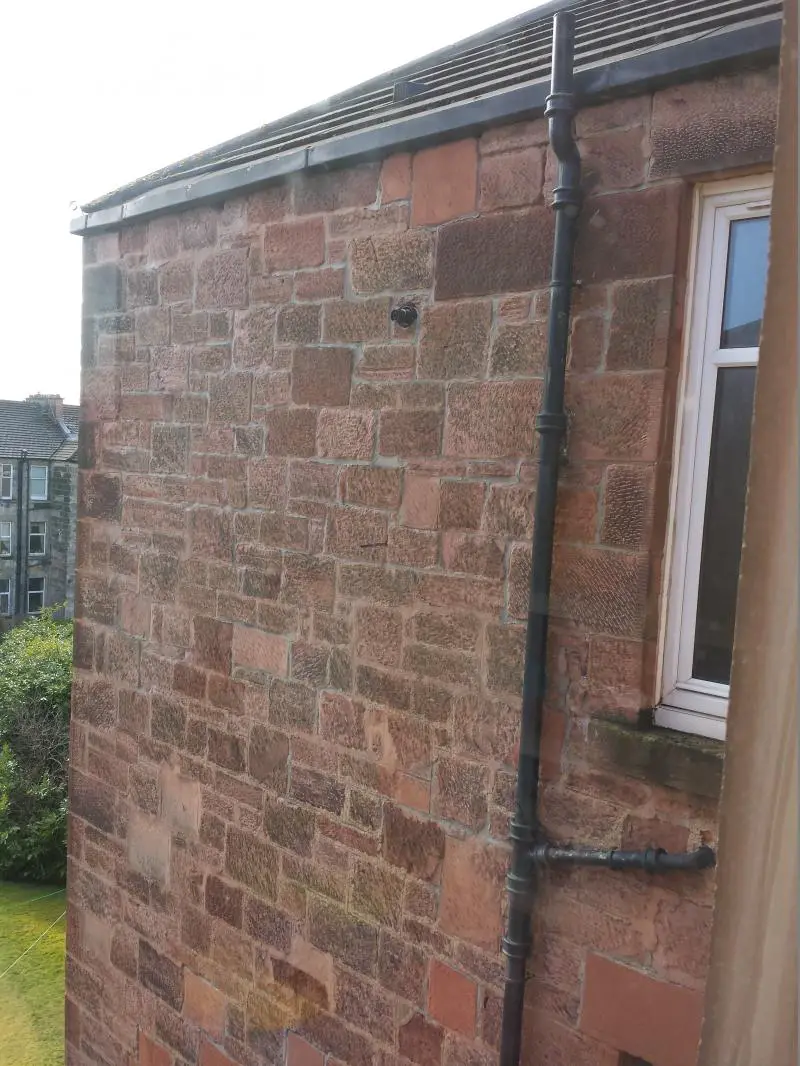Hi, to cut a long story short I have a top floor tenement flat, with a couple of rooms (kitchen, wc) protruding from the main building. The kitchen in particular is pretty cold, particularly when blustery. I thought the main reason was the lack of loft insulation in the protruding part of the flat (seperate loft space with no access until now).
I have bought some rolls of knauff and will insulate shortly, but I noticed yesterday when taking a socket off one of the walls that there is a draught (behind the lath + plaster) that would cut you in two.
1) Will loft insulation be of limited benefit while this wall is acting as a big heat sink?
2) Is there any way to limit this airflow?
I understand that there should be an air-gap between the plaster and the sandstone wall on the outside to prevent transfer of moisture. I am presuming that there is a gap at the top/loft which is allowing wind to whistle down - can this be blocked even partially, to still allow the gap to exist but prevent it being so cold??
I have bought some rolls of knauff and will insulate shortly, but I noticed yesterday when taking a socket off one of the walls that there is a draught (behind the lath + plaster) that would cut you in two.
1) Will loft insulation be of limited benefit while this wall is acting as a big heat sink?
2) Is there any way to limit this airflow?
I understand that there should be an air-gap between the plaster and the sandstone wall on the outside to prevent transfer of moisture. I am presuming that there is a gap at the top/loft which is allowing wind to whistle down - can this be blocked even partially, to still allow the gap to exist but prevent it being so cold??




